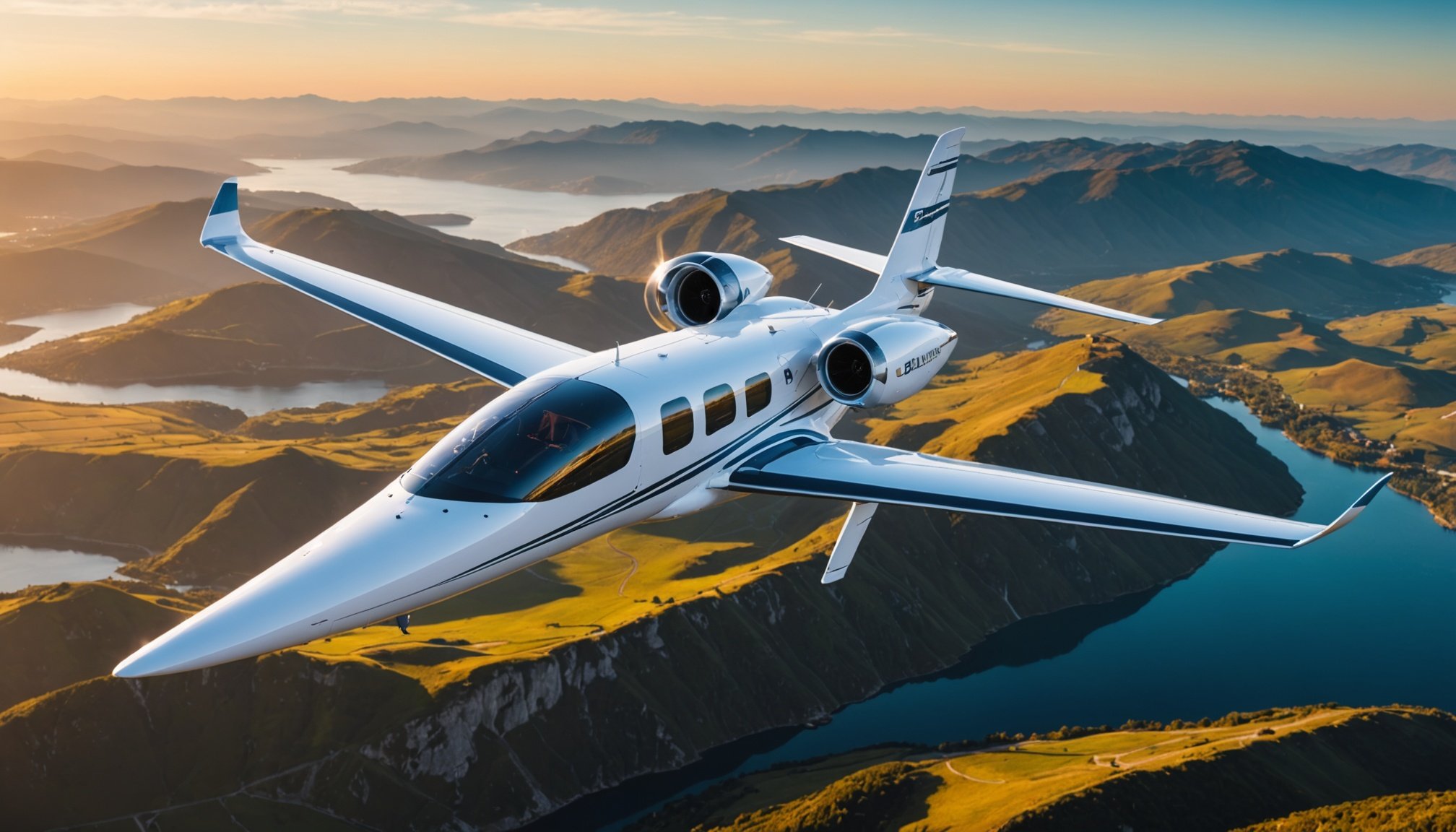Revolutionary Advances Transforming Electric Aircraft for Efficient Short-Haul Travel
The aviation industry is on the cusp of a significant transformation, driven by the rapid advancement of electric aircraft technology. As the world grapples with the challenges of climate change and the need for sustainable solutions, electric aviation is emerging as a beacon of hope for a cleaner, more efficient future of air travel.
The Rise of Electric Aviation
Electric aviation is not just a concept; it is a reality that is quickly taking shape. Companies like Airbus, ZeroAvia, and Heart Aerospace are at the forefront of this revolution, investing heavily in the development of electric and hybrid-electric aircraft.
Have you seen this : Exploring the Impact of AI-Powered CCTV on Crime Reduction in Vulnerable Areas
Key Players and Innovations
Several key players are driving the electric aviation revolution:
-
Airbus and Toshiba: Their collaboration on a superconducting motor for aircraft is a groundbreaking step. This technology uses liquid hydrogen as both fuel and coolant, significantly enhancing the efficiency and reducing the weight of the propulsion system. According to Grzegorz Ombach, Airbus Senior Vice President and Head of Disruptive R&T, “Partnering with Toshiba presents a unique opportunity to push beyond the limitations of today’s partial superconducting and conventional electrical motors.”[2]
Also to see : Exploring the Future of Organic Photovoltaics in Solar-Powered Building Integration
-
ZeroAvia: This company is working on hydrogen-electric powertrains, such as the ZA600, which can propel 10-20 seat aircraft with zero emissions. Val Miftakhov, Founder and CEO of ZeroAvia, emphasized, “This is a rare ‘zero to one’ moment; just as the introduction of the jet engine revolutionized air transportation, this pioneering engine will usher in a new era of truly clean aviation.”[3]
-
Heart Aerospace: Known for its ES-30, a 30-seat electric regional aircraft, Heart Aerospace is another significant player. Their focus is on creating sustainable air mobility solutions that can replace traditional fossil fuel-based aircraft for short-haul flights.
Benefits of Electric Aircraft
The shift to electric aircraft offers numerous benefits, both for the environment and the aviation industry itself.
Reduced Emissions
One of the most critical advantages of electric aircraft is their ability to produce zero emissions during flight. This is a significant step towards reducing the aviation industry’s carbon footprint, which currently accounts for about 2-3% of global CO2 emissions[5].
Lower Operating Costs
Electric motors are more efficient and have fewer moving parts than traditional combustion engines. This leads to lower maintenance and fuel costs, which can result in cheaper ticket prices for passengers and lower overhead for airlines. For instance, electric planes are expected to be quieter and more cost-effective, making them ideal for regional flights[5].
Quieter Flights
Electric aircraft produce less noise than traditional jet engines, reducing noise pollution around airports. This could lead to fewer restrictions on flight paths and increased acceptance of air travel in noise-sensitive areas. The quieter operation also enhances the passenger experience, making flights more comfortable[5].
Challenges and Solutions
Despite the promising benefits, electric aviation faces several challenges that need to be addressed.
Battery Limitations
One of the primary challenges is the energy storage capacity of batteries. Current battery technology limits electric planes to short-haul flights due to the high energy density required for takeoff, cruising, and landing. However, researchers are actively working on making batteries lighter, longer-lasting, and more efficient. Advancements in battery technology are expected to extend the range of electric aircraft over time[5].
Infrastructure
The lack of adequate infrastructure is another hurdle. Electric aircraft require specific charging facilities and maintenance protocols that are different from those of traditional aircraft. However, as the demand for electric aviation grows, so does the investment in the necessary infrastructure.
Technological Advancements
Several technological advancements are driving the electric aviation revolution forward.
Superconducting Motors
The collaboration between Airbus and Toshiba on superconducting motors is a significant technological leap. These motors are over three times lighter than traditional alternatives and boast an impressive 97% powertrain efficiency rating. This technology, combined with the use of liquid hydrogen, addresses the challenges of weight and efficiency in aircraft propulsion[2].
Hybrid-Electric Propulsion
Hybrid-electric propulsion systems, like those being developed by ZeroAvia, offer a scalable solution. The ZA600 powertrain, for example, uses fuel cells to transform hydrogen into electricity, which then powers the motor. This approach allows for true zero-emission flight and has the potential to be scaled up for larger aircraft[3].
Practical Insights and Future Implications
As electric aviation continues to evolve, here are some practical insights and future implications to consider:
New Flight Routes and Air Mobility
Electric aircraft’s lower operating costs could open up new flight routes in regional areas that are currently underserved by traditional airlines. Small, electric commuter planes could connect cities and towns that don’t have the demand or infrastructure for larger jets. This expansion of air mobility can enhance connectivity and economic growth in these regions[5].
Urban Air Taxis
Companies like Lilium are working on electric vertical takeoff and landing (eVTOL) aircraft, which could revolutionize urban air mobility. These air taxis promise to reduce traffic congestion and provide a sustainable alternative for short-distance travel within cities.
Table: Comparison of Electric and Traditional Aircraft
| Feature | Electric Aircraft | Traditional Aircraft |
|---|---|---|
| Emissions | Zero emissions during flight | Significant CO2 emissions |
| Noise | Quieter operation | Higher noise levels |
| Operating Costs | Lower maintenance and fuel costs | Higher maintenance and fuel costs |
| Energy Source | Batteries or hydrogen fuel cells | Fossil fuels |
| Range | Currently limited to short-haul | Long-haul capabilities |
| Weight | Lighter propulsion systems | Heavier propulsion systems |
| Efficiency | Higher powertrain efficiency | Lower powertrain efficiency |
Detailed List of Benefits
Here is a detailed list of the benefits of electric aircraft:
-
Reduced Emissions:
-
Zero emissions during flight
-
Significant reduction in the aviation industry’s carbon footprint
-
Contribution to global climate goals
-
Lower Operating Costs:
-
More efficient electric motors
-
Fewer moving parts in electric motors
-
Lower maintenance costs
-
Potential for cheaper ticket prices
-
Quieter Flights:
-
Reduced noise pollution around airports
-
Enhanced passenger experience
-
Increased acceptance in noise-sensitive areas
-
New Flight Routes:
-
Expansion of air mobility in regional areas
-
Connection of underserved cities and towns
-
Economic growth in regional areas
-
Increased Payload Capacity and Extended Flight Ranges:
-
Lighter propulsion systems
-
More efficient use of energy
-
Potential for longer flight ranges with advancements in battery technology
Quotes and Perspectives
-
Grzegorz Ombach, Airbus Senior Vice President and Head of Disruptive R&T: “Partnering with Toshiba presents a unique opportunity to push beyond the limitations of today’s partial superconducting and conventional electrical motors.”[2]
-
Val Miftakhov, Founder and CEO, ZeroAvia: “This is a rare ‘zero to one’ moment; just as the introduction of the jet engine revolutionized air transportation, this pioneering engine will usher in a new era of truly clean aviation.”[3]
-
Industry Perspective: “The future of aviation is electric. With companies like Eviation, Airbus, and Rolls-Royce at the forefront, electric aeroplanes are poised to transform the industry. While there are still challenges to overcome, the benefits, ranging from reduced emissions to lower operating costs, make electric aviation a critical step toward a more sustainable future.”[5]
The future of air travel is indeed electric, and the advancements in this field are nothing short of revolutionary. As technology continues to evolve, we can expect to see more efficient, sustainable, and quieter aircraft dominating the skies. The collaboration between industry giants and innovative startups is paving the way for a cleaner, more efficient aviation industry. While challenges remain, the potential benefits of electric aviation make it a journey worth embarking on, as we strive towards a sustainable and environmentally friendly future for air travel.











